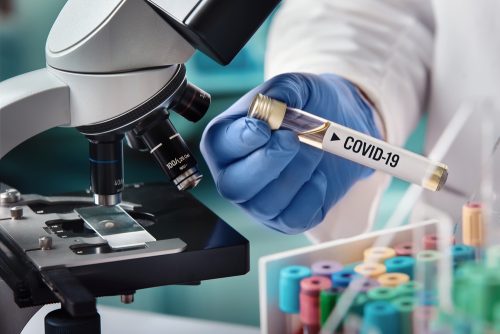Coronavirus and Food: Media Continues to Bury the Lead
Global health organizations continue to find there is no evidence of food or food packaging being associated with the transmission of the virus that causes COVID-19.
Virus Surviving on Surfaces Is Not New
We continue to see poor reporting, and worse headlines, about studies that show SARS-CoV-2 can survive on surfaces, including food. This is not new information – like most viruses, the novel coronavirus can survive on different surfaces at different temperatures for a certain period of time.
Headlines Inaccurately Implicate Salmon
The latest reporting of the issue covers research from China. The study has not been published or peer-reviewed, but that did not stop Bloomberg or The Hill from reporting the findings, which is that SARS-CoV-2 could survive for 8 days on salmon kept at 39 degrees Fahrenheit.
The fact that SARS-CoV-2 survived on chilled salmon does not indicate that salmon is a carrier of the coronavirus. The study could have looked at the virus surviving on a plastic bag, a grain of rice, or a shoe. Again, it’s not a new discovery that the virus can survive on surfaces in the right environment. However, there continues to be no evidence that the survivability of the virus on food surfaces, like salmon in this particular case, can transmit the coronavirus to someone who eats or handles that product. Yet, headlines like today’s in Bloomberg (“Salmon May Harbor Infectious Coronavirus For a Week, Study Shows”) suggest to readers, especially those who don’t read the full article, that salmon is in some way uniquely positioned to possibly transmit the coronavirus, which is inaccurate.
COVID is Not a Foodborne Illness
The Food and Drug Administration says, “Unlike foodborne gastrointestinal (GI) viruses like norovirus and hepatitis A that often make people ill through contaminated food, SARS-CoV-2, which causes COVID-19, is a virus that causes respiratory illness and not gastrointestinal illness, and foodborne exposure to this virus is not known to be a route of transmission.”
Global Health Experts Confident Food is Safe
Reporters looking for a hyperbolic headline and a good scare story have repeatedly failed to reference myriad platinum-level food safety organizations that explain how food and package surfaces can be hospitable to a virus but not perpetuate infection. Here are just a few:
- “Despite the many billions of meals consumed and food packages handled since the beginning of the COVID-19 pandemic, to date there has not been any evidence that food, food packaging or food handling is a source or important transmission route for SARS-CoV-2 resulting in COVID-19.”
International Commission on Microbiological Specifications for Foods
- “True then. True still today. There is no evidence of food or food packaging being associated with the transmission of the virus that causes COVID-19.”
Frank Yiannas
Deputy Commissioner
Food Policy & Response
U.S. Food & Drug Administration
- “People should not fear food, or food packaging or processing or delivery of food.”
Mike Ryan
Head of Emergencies Programme
World Health Organization
- “Currently, there is no evidence to suggest that handling food or consuming food is associated with COVID-19.”
Centers for Disease Control and Prevention
For more about seafood safety during the pandemic please visit this website with FAQs and resources.


